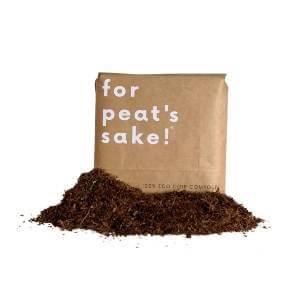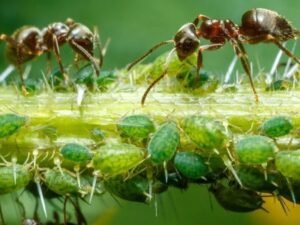Tomato moth, scientifically known as Tuta absoluta, is a destructive pest that poses a significant threat to tomato crops worldwide. This tiny moth is highly prolific, capable of causing substantial yield losses and compromising the quality of tomato fruits. In this article, we will explore the causes, symptoms, prevention, and control measures for tomato moth infestation, equipping you with the knowledge to effectively manage this pest and protect your tomato harvest.
What is Tomato Moth - Tuta absoluta?
Tomato moth, Tuta absoluta, is a small, invasive moth species that primarily infests tomato crops. Originating from South America, it has now spread to various regions globally, facilitated by trade and transportation. Both the larvae and adult stages of this pest are damaging to tomato plants, causing direct feeding damage and facilitating the transmission of diseases.
Symptoms of Tomato Moth Infestation:
Early detection of tomato moth infestation is crucial for effective control. The following symptoms may indicate the presence of tomato moth:
Larval (Caterpillar) Stage:
- Pinhole or shallow mines on leaves
- Larvae feed internally on leaves, creating tunnels and causing leaf discoloration or browning
- Visible frass (excrement) on leaf surface or in leaf mines
- Boring into stems or fruit, leading to rot and tissue destruction
Adult Moth Stage:
- Small, grayish-brown moths with a wingspan of about 8-10 mm
- Moths are often active during the evening and night and may be seen flying around tomato plants
- Females lay eggs on the leaves, stems, or fruits, often on the undersides of leaves
- Eggs are translucent and difficult to spot without close inspection
Causes and Contributing Factors:
Several factors contribute to the spread and rapid infestation of tomato moth:
High Reproductive Capacity:
- A single female moth can lay hundreds of eggs during its relatively short lifespan, leading to exponential population growth.
- The ability of the pest to undergo multiple generations within a single season further exacerbates the infestation.
Resistance to Pesticides:
- Tomato moth populations have shown resistance to various insecticides, making control challenging.
- Misuse or overuse of pesticides without proper rotation can contribute to resistance development.
Favorable Environmental Conditions:
- Warm temperatures, high humidity, and ample food sources, such as tomato crops, create a conducive environment for tomato moth reproduction and survival.
Prevention and Control:
Cultural Techniques:
- Crop rotation: Rotate tomato crops with non-host crops to disrupt the lifecycle of tomato moth and reduce population build-up.
- Sanitation and removal of infested plant material: Promptly remove and destroy any infested plants or fruits. This helps break the breeding cycle and reduces the potential for reinfestation.
Biological Control:
- Encourage natural enemies: Promote the presence of natural predators and parasitic wasps that prey on tomato moth larvae, such as minute pirate bugs and Trichogramma wasps.
- Introduce beneficial insects: Consider releasing commercially available beneficial insects, like Nesidiocoris tenuis or Macrolophus bugs, which feed on tomato moth larvae.
Pheromone Traps:
- Use pheromone traps to monitor adult tomato moth populations and capture male moths, disrupting their mating patterns and reducing reproduction.
Chemical Control:
- If pest populations are at damaging levels, use insecticides specifically labeled for tomato moth control.
- Rotate between different active ingredients to minimize the risk of resistance development.
- Follow the instructions and recommendations on the pesticide label, including application rates and timing, while also considering the potential impact on beneficial insects and the environment.
Managing Tomato Moth Infestation:
If tomato moth infestation is detected in your tomato crop, take immediate action to prevent further damage and reduce population levels:
- Carefully inspect plants for the presence of eggs, larvae, or adult moths.
- Remove and destroy infested plants, focusing on the most severely damaged areas.
- Regularly monitor the presence of tomato moth through pheromone traps or visual inspection.
- Implement preventative measures (as mentioned earlier) in subsequent growing seasons to minimize the risk of reinfestation.
Conclusion:
Tomato moth infestation can cause significant damage to tomato crops, leading to yield losses and compromised fruit quality. Understanding the causes, symptoms, prevention, and control measures for tomato moth is vital for effectively managing this pest.
By implementing proper cultural techniques, encouraging biological control methods, and employing chemical control when necessary and within recommended guidelines, tomato growers can minimize the impact of tomato moth and protect their tomato harvest.
Tomato Moth Frequently Asked Questions (FAQs)
Here are some frequently asked questions (FAQs) about tomato moth:
Q. What is tomato moth?
A. Tomato moth, scientifically known as Tuta absoluta, is a small moth species that infests tomato crops. Both the larvae and adult stages of this pest can cause damage to tomato plants.
Q. How do I identify tomato moth infestation in my tomato plants?
A. Look for symptoms such as pinhole or shallow mines on leaves, brown discoloration or browning of leaves, frass (excrement) on leaf surface or in leaf mines, larvae boring into stems or fruit, and the presence of small grayish-brown moths flying around tomato plants.
Q. What damage can tomato moth larvae cause to tomato fruits?
A. Tomato moth larvae can bore into tomato fruits, causing rot and tissue destruction. This can result in the loss of fruit quality and marketability.
Q. What are some non-chemical methods to control tomato moth infestation?
A. Cultural techniques like crop rotation with non-host crops, sanitation by removing and destroying infested plant material, and promoting the presence of natural enemies and beneficial insects can help control tomato moth infestations.
Q. Are there any chemical control options for tomato moth?
A5. If pest populations are at damaging levels, insecticides specifically labeled for tomato moth control can be used. It is important to rotate between different active ingredients to minimise the risk of resistance development and follow the instructions and recommendations on the pesticide label.
Q. How can I prevent tomato moth infestation in my tomato plants?
A. Some preventive measures include implementing crop rotation, practicing good sanitation by removing and destroying infested plants, and using pheromone traps for monitoring and disrupting the mating patterns of tomato moths.
Q. Can I eat tomatoes that have been infested by tomato moth larvae?
A. It is generally recommended to discard tomato fruits that have been infested by tomato moth larvae, as the damage caused by their feeding can compromise the quality and taste of the fruits.
Q. How do I monitor and manage tomato moth populations?
A. Regularly inspect your tomato plants for signs of tomato moth infestation, including eggs, larvae, or adult moths. Monitoring can be done using pheromone traps or visual inspection. If infestation is detected, take immediate action by removing and destroying infested plants and implementing control measures.
Q. Can tomato moth infestations be completely eliminated?
A. While it may be challenging to completely eliminate tomato moth infestations, timely detection and appropriate control measures can help manage and minimise the impact of the pest in tomato crops.
Q. Are there any resistant tomato varieties to tomato moth?
A. Some tomato varieties exhibit resistance or tolerance to tomato moth. It is recommended to select and grow resistant varieties when possible, and obtain seedlings from reliable sources to ensure they are free from tomato moth infestation.




































